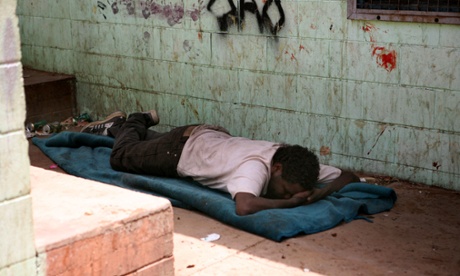Failure to take issue seriously fuelling a looming epidemic, says Alzheimer’s Australia

Indigenous people experience dementia at a rate at least three times higher than the non-Indigenous population in Australia, but a lack of awareness of the seriousness of the issue means not enough is being done to combat a “looming epidemic”, the peak body for Alzheimer’s sufferers and their carers has said.
The report by Alzheimer’s Australia, released on Wednesday, reviewed existing research on dementia among Aboriginal and Torres Strait Islander people, and called for dementia to be included in preventative health strategies to ensure that people can learn about and address modifiable risk factors.
“The number of Aboriginal and Torres Strait Islander people aged 55 years and over is projected to increase over the next 20 years, which means if we don’t act now, we will see an increase in the number of Aboriginal and Torres Strait Islander people diagnosed with dementia,” said Fred Tanner, chair of the organisation’s Indigenous advisory committee.
Dementia affects more than 320,000 Australians, according to federal government figures.
The risk of dementia doubles every five years after the age of 65, and a range of chronic diseases “of serious concern to Aboriginal people” had similar risk factors, the organisation’s CEO Glenn Rees told Guardian Australia.
“Your risk of dementia is greater if you have heart issues, if you have diabetes, are obese, if you smoke, and obviously some dementias are alcohol-related. An economic and efficient way of dealing with a health problem would be to include dementia as part of the the work done in respect of other chronic diseases which have been on the Indigenous health agenda for some time.”
Rees suggested the much lower life expectancy for Indigenous people could lead to an assumption that dementia wouldn’t be as prevalent, but they are in fact seeing a higher rate of dementia, often with earlier onset.
In 2009, 39% of Indigenous residents with dementia were aged under 75 years compared with 9% of non-Indigenous residents, according to a report by the Australian Institute of Health and Welfare (AIHW).
It found the disease is emerging as an issue “probably due to the high rates of chronic disease and other risk factors they experience, but relatively few access government support programs, particularly in remote communities”.
Rees said living in remote areas is also an obvious contributing problem.
In urban areas AIHW ascribes low access to a difficulty in accessing culturally appropriate services and social isolation.
“Data collected as a part of the 2008 [national Aboriginal and Torres Strait Islander Social Survey] revealed that 30% of Aboriginal and Torres Strait Islander people aged 15 years and over reported problems in accessing health services,” said the report.
Among its recommendations, the organisation said access to services for both sufferers and their carers needed to be improved.
“With a great emphasis on flexible services and community support, one would hope that in the longer term services do become tailored more to meet the individual needs of Aboriginal and Torres Strait Islander people,” said Rees.
Dr Robert Parker, an adjunct associate professor at Flinders university said the issue is “a major emerging epidemic.”
“I’m not understating that,” he said.
“There’s also a significant prevalence of dementia acquired brain injury or intellectual disability in the much younger Aboriginal population,” said Parker, citing dramatically higher rates of head injuries among Indigenous youth and women and emerging research linking repeated concussions to brain damage.
“It’s not just the old people that are getting it, it’s the young people as well. Anecdotally we’re hearing of quite significant numbers of young Aboriginal people developing quite severe brain damage or intellectual people in their 40s.”
Parker, who has written extensively on Indigenous mental health, said the increasing use of more culturally secure assessment tools, such as the Kimberley Indigenous Cognitive Assessment (Kica), may also be a factor in why it’s more prevalent “because we have ways of testing it now.”
The Kica was developed in the Kimberley and tests a range of brain function “using things that are very familiar for Aboriginal people with low levels of literacy,” said Parker.
The report called for education and awareness campaigns in Indigenous communities, and for increased funding to its programs and workers to operate alongside Indigenous health workers.
